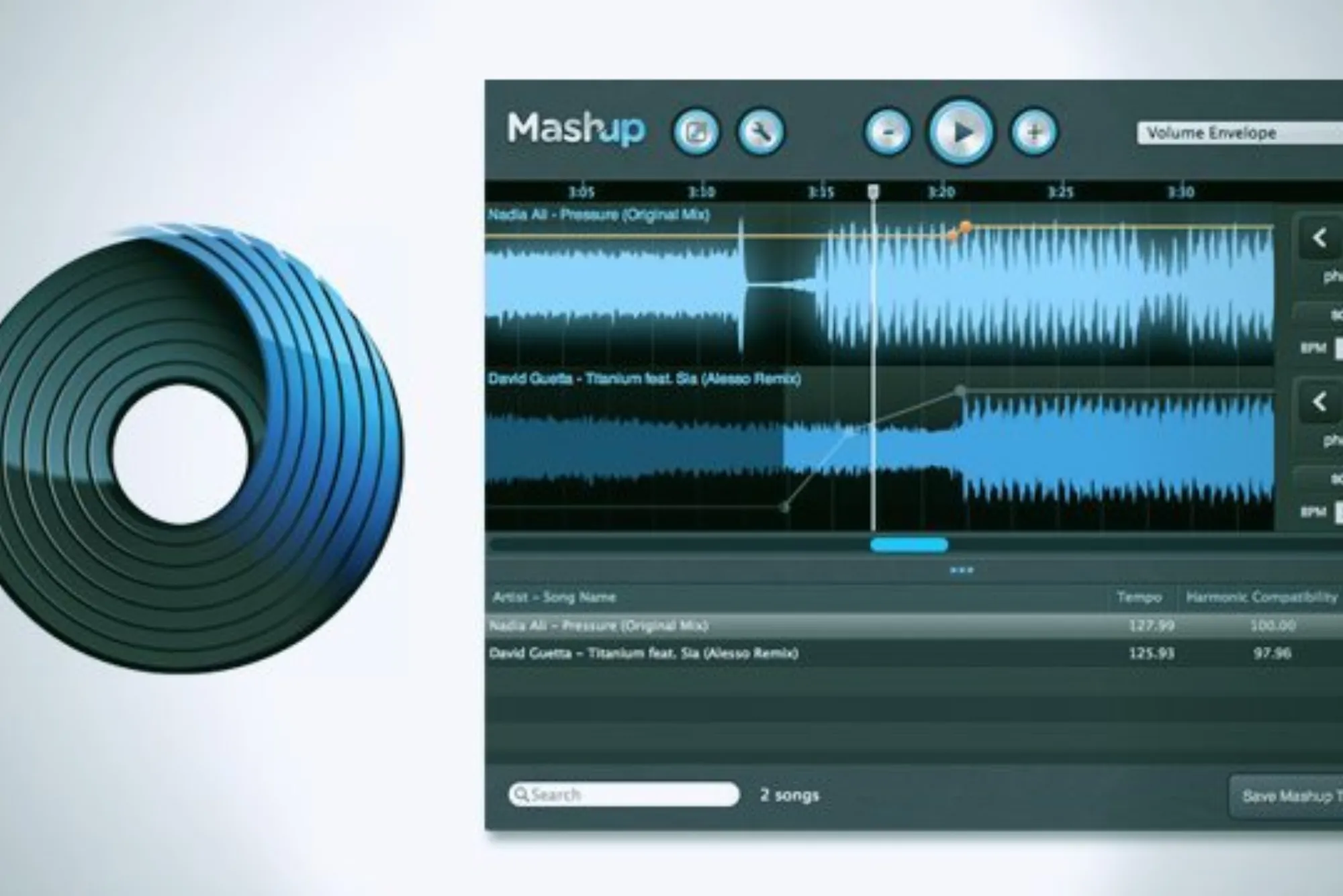Creating a song mashup can be an exciting and creative process, allowing you to blend your favorite tracks into a single, harmonious piece. Whether you’re a beginner or an experienced DJ, this guide will walk you through the essential steps and techniques to master the art of mashing up songs. In this guide, we’ll explore various aspects of song mashups, including tips for selecting the right tracks, software recommendations, and step-by-step instructions to help you create seamless blends.
Understanding the Basics of Song Mashups
A song mashup involves combining two or more tracks, blending their melodies, rhythms, and harmonies to create a new, cohesive piece of music. The key to a successful mashup is ensuring that the combined songs complement each other in terms of tempo, key, and style. For example, using tracks like “lottery song bad” and “naa songs varasudu” can yield interesting results when blended correctly.
Selecting the Right Songs
When choosing songs to mashup, consider the following tips:
- Compatibility: Ensure the songs have similar tempos (beats per minute) and keys. This makes it easier to blend them seamlessly.
- Popularity: Using well-known tracks, such as “lottery song bad” or “naa songs varasudu,” can make your mashup more appealing to listeners.
- Contrast and Harmony: Look for songs that offer a balance between contrast and harmony. Combining different genres can create a unique sound, but they should still harmonize well.
Essential Tools and Software
To create high-quality mashups, you’ll need reliable software. Here are some popular options:
- Audacity:
- A free, open-source audio editor that is great for beginners.
- Ableton Live:
- A professional-grade DAW (Digital Audio Workstation) used by many DJs and producers.
- FL Studio:
- Another powerful DAW known for its user-friendly interface and robust features.
Step-by-Step Guide to Creating a Mashup
1. Choose Your Tracks
Select the songs you want to mashup. For this example, let’s use “lottery song bad” and “naa songs varasudu.”
2. Analyze the Tempo and Key
Use software like Mixed In Key to determine the tempo (BPM) and key of each track. This step is crucial for ensuring the songs blend well together.
3. Import Tracks into Your DAW
Open your chosen DAW and import the tracks. Ensure that each song is placed on a separate track for easier manipulation.
4. Beatmatching
Align the beats of both tracks. Adjust the tempo of one or both songs to match each other. This can usually be done by stretching or compressing the audio.
5. Harmonic Mixing
Ensure the tracks are in compatible keys. You can either pitch-shift one of the tracks or use a harmonic mixing guide to find a compatible key.
6. Cut and Edit
Identify the sections of each song that you want to use. Common parts to mix include verses, choruses, and instrumentals. Cut these sections and arrange them in a way that creates a smooth transition from one song to the next.
7. Add Effects
Use effects like EQ, reverb, and delay to blend the songs more seamlessly. For instance, you might use a high-pass filter to gradually introduce a new track or add reverb to smooth out transitions.
8. Fine-Tuning
Listen to your mashup multiple times and make necessary adjustments. Pay attention to how to mashup songs the transitions and ensure there are no abrupt changes or clashing elements.
9. Export and Share
Once you’re satisfied with your mashup, export it in your desired format (e.g., MP3 or WAV). Share your creation on platforms like SoundCloud, YouTube, or social media.
Tips for Enhancing Your Mashups
- Practice Regularly:
- The more you practice, the better you’ll get at identifying compatible tracks and creating seamless transitions.
- Listen to Other Mashups:
- Analyze how other DJs and producers create their mashups. Pay attention to the techniques they use.
- Experiment with Genres:
- Don’t be afraid to mix songs from different genres. Sometimes, the most unexpected combinations can create the best mashups.
- Use Professional Samples:
- Incorporate high-quality samples and loops to add depth and variety to your mashups.
Common Mistakes to Avoid
- Ignoring Key and Tempo:
- Always check the key and tempo compatibility of your tracks. Ignoring this can result in a discordant and jarring mashup.
- Overusing Effects:
- While effects can enhance your mashup, overusing them can make how to mashup songs the final product sound cluttered and unprofessional.
- Poor Transitions:
- Ensure your transitions are smooth. Abrupt changes can disrupt the flow of your mashup and distract listeners.
Advanced Techniques
For those looking to take their mashup skills to the next level, consider exploring these advanced techniques:
- Live Mashups: Perform live mashups using DJ software like Serato or Traktor. This allows for real-time mixing and can be a great way to engage with an audience.
- Layering Vocals and Instrumentals: Experiment with layering vocals from one song over the instrumental of another. This can create a unique and engaging sound.
- Using Acapellas: Incorporate acapella versions of songs to give you more flexibility in your mashup.
Building a Mashup from Scratch
To give you a more detailed understanding, let’s go through an example of building a mashup from scratch using “lottery song bad” and “naa songs varasudu.”
1. Preparing Your Workspace
Ensure your DAW is set up correctly. Create separate tracks for each song and organize your workspace to make editing easier.
2. Importing and Analyzing Tracks
Import “lottery song bad” and “naa songs varasudu” into your DAW. Analyze their BPM and key to determine how best to align them.
3. Syncing the Tempo
If the tempos of the songs differ, adjust them to match. Use the warp function in your DAW to stretch or compress the audio without affecting the pitch.
4. Key Matching
If the keys are not compatible, use pitch shifting to bring one track into the key of the other. This step is crucial for maintaining harmonic coherence.
5. Cutting and Arranging
Decide which parts of each song you want to use. For instance, you might start with the instrumental of “naa songs varasudu” and introduce the vocals of “lottery song bad” during the chorus.
6. Adding Effects
Use effects to blend the tracks. For instance, apply EQ to remove conflicting frequencies and use reverb to smooth out transitions.
7. Fine-Tuning the Mashup
Listen to your mashup and make adjustments. Pay attention to the dynamics and ensure that no part of the mashup overpowers another.
8. Finalizing and Exporting
Once satisfied, export your mashup. Choose a high-quality format like WAV for the best sound, or MP3 if you’re planning to upload it online.
Sharing Your Mashup
After creating your mashup, it’s time to share it with the world. Here are some tips for promoting your work:
- Upload to Music Platforms:
- Use platforms like SoundCloud, YouTube, and Mixcloud to share your mashup.
- Social Media Promotion:
- Share your mashup on social media platforms and music forums to reach a broader audience.
- Collaborate with Other Artists:
- Collaborating with other DJs and producers can help you gain exposure and improve your skills.
Legal Considerations
It’s important to be aware of the legal implications of creating and sharing mashups. Here are some key points to consider:
- Copyright:
- Mashups involve using copyrighted material, which can lead to legal issues. Always check the copyright status of the tracks you’re using.
- Licensing:
- Some platforms require you to obtain licenses for the tracks used in your mashups. Consider using royalty-free music if you’re concerned about legal issues.
- Attribution:
- Give credit to the original artists in your mashup descriptions to acknowledge their work.
Creating a mashup is both an art and a science. By understanding the basics, selecting the right tools, and practicing regularly, you can create impressive and seamless song mashups. Remember to pay attention to the compatibility of your tracks, use effects judiciously, and always strive for smooth transitions. With time and practice, you’ll be able to create mashups that not only sound professional but also captivate your audience. So, get started with your favorite tracks like “lottery song bad” and “naa songs varasudu” and start mashing up songs like a pro. Happy mixing!
Further Learning Resources
If you’re interested in learning more about song mashups, here are some resources to consider:
- Online Courses: Websites like Udemy and Coursera offer courses on music production and DJing.
- Tutorials: YouTube has countless tutorials on creating mashups with various software.
- Books: Consider reading books on music production and DJing to deepen your understanding.








